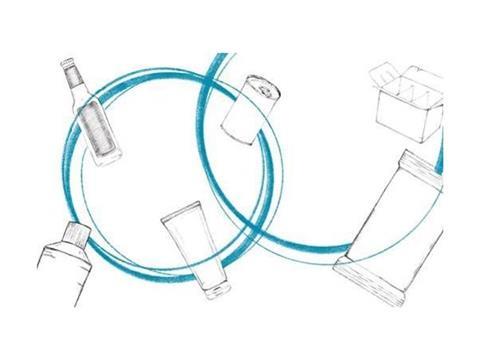
During WPO week in Prague (May 13-17), Circular Economy was one of the hot topics in many discussions. From a request of WPO Vice President Sustainability, Antro Säilä, Ernst Krottendorfer, Managing Director of Packforce, WPO member in Austria, prepared the Circular Packaging Design Guideline focused on the European reality.
Read some of the most important points from the document extracted below.
The Circular Economy Package of the European Union forces much higher recycling rates for packaging.Initiatives of the European Union are aiming at closing material and product cycles for packaging. With the release of the Circular Economy Package, the European Union is targeting at improving the efficient use of materials and reducing the resource dependency of Europe. In the course of releasing this regulation, the European Union has also issued new rules for packaging and packaging waste.
Substantially increased recycling rate requirements for packaging as of 2025
These new rules represent a substantial increase in the recycling rates for all packaging materials starting 2025 with 65 % until reaching a minimum of 70% in 2030. Plastic packaging has to get at a recycling rate of 55% until 2030 and all plastic packaging needs to be recyclable 100% in 2030. Further to that there will be a regulation for a minimum recycling content in plastic bottles for beverages and the placement of market restrictions of specific single use plastics.
Basic prerequisite for the implementation is circular packaging design
In order to reach these goals, circular packaging design is essential to fulfill the targets of recyclability. The definition of recyclability includes the need for a dedicated collection system, and for packaging materials to be separable and sortable. In order to avoid downcycling, recyclates must be used for the same or similar purposes than the basic product. Besides the requirement for circular product design, investment in recycling capacity and infrastructure is necessary to make circular economy work. Recyclability defines a packaging system that can be recycled in a state-of-the-art packaging waste system on an industrial scale.
Circular Packaging Design Guideline
The University of Applied Sciences Vienna (FH Campus Wien), together with Packforce Austria, the Austrian member of WPO and Circular Analytics, a Vienna-based consulting company, has developed and issued the Circular Packaging Design Guideline. This guideline consists of design recommendations for recyclable packaging. The objective of the guideline is to give actors along the whole value chain information and instructions for action in order to design recyclable packaging. The guideline is constantly reviewed to implement changes and developments in collection, sorting and recycling technology as well as new material developments of packaging. The guideline has been elaborated in close cooperation with material producers, packaging converters, consumer goods companies, retailers, collection systems and recycling companies. The guideline in its current form is valid for Austria and Germany.
Model for a holistic assessment of packaging sustainability
In order to monitor packaging developments and to facilitate packaging design and packaging decisions also a model for the holistic assessment of packaging sustainability has been developed. The model consists of the concept of recyclability as one major element and of the calculation of direct and indirect environmental impacts of packaging. Direct environmental impacts are calculated in the LCA (life cycle assessment) of the packaging system and indirect environmental impacts relate to the LCA of packaging related product losses. For packaging decisions all three elements need to contemplated.
Internationalization of the Circular Packaging Design Guideline
The recyclability of a packaging system very much depends on the technical capabilities and the recycling infrastructure in a given country. Recyclability therefore differs from country to country. This is a major hurdle for international consumer goods companies and retailers who have to design products and packaging for an international market. These companies and their suppliers and customers need additional information on the recycling infrastructure on an international level.
Call for partners
In order to support the international development of packaging, Packforce is aiming at internationalizing the Circular Packaging Design Guideline. In a first step Packforce is targeting the European market. Special issues of the guideline shall be developed for- North Europe (Sweden, Denmark, Norway, Finland),- Central Eastern Europe (Poland, Czech Republic, Slovakia, Slovenia, Hungary, Croatia, Slovenia),- Western Europe (UK, France, Italy, Spain, Switzerland).Packforce is therefore looking for cooperation partners in the respective countries, who can contribute in a first step information regarding the collections systems and recycling infrastructure.














